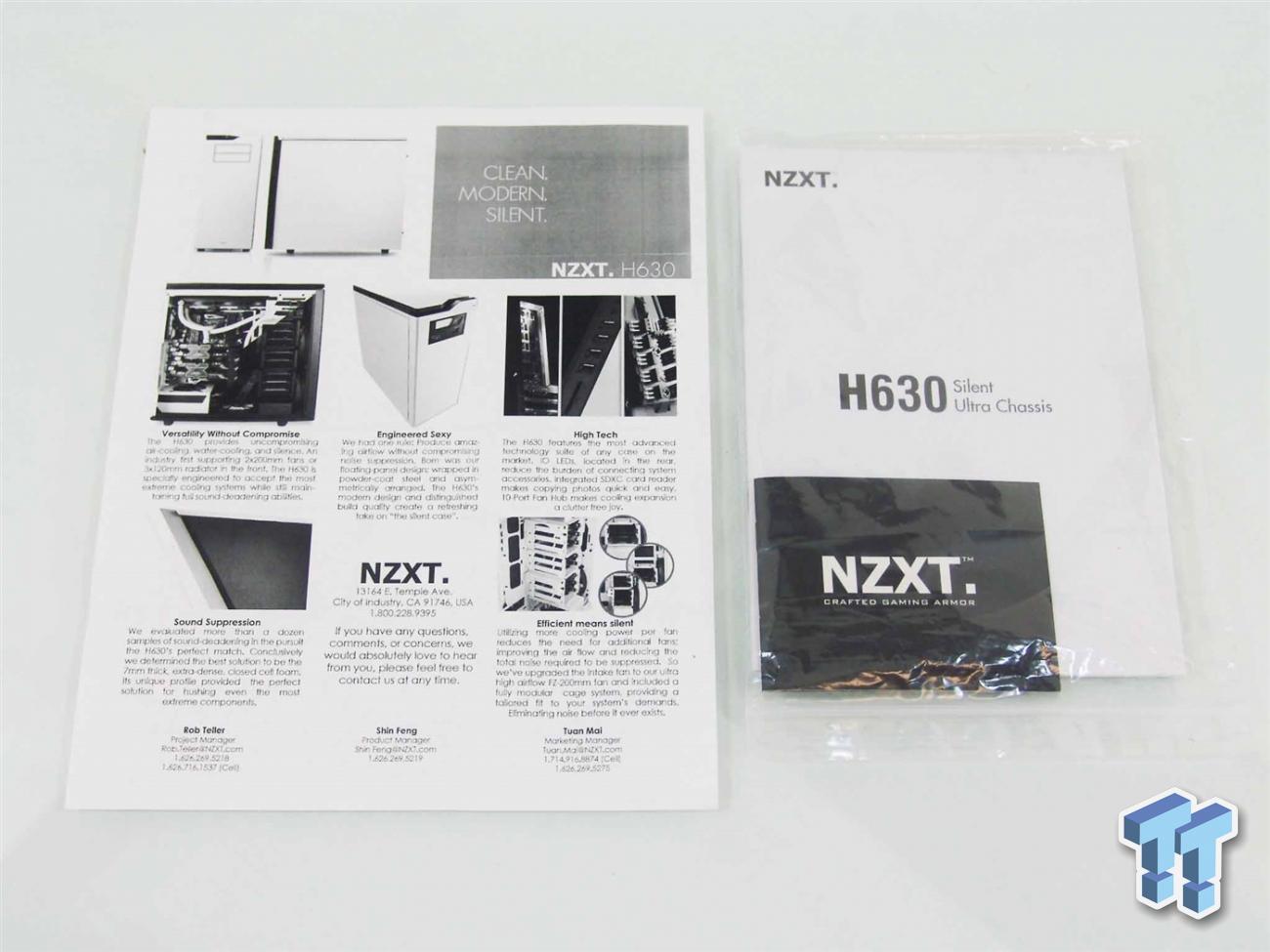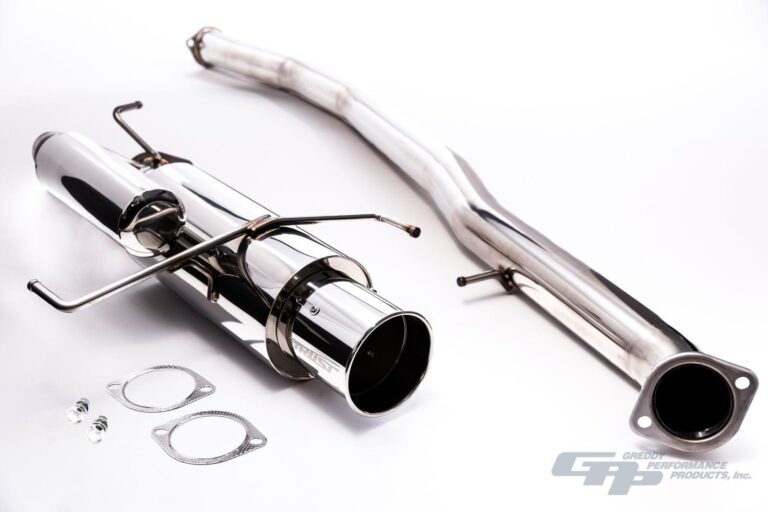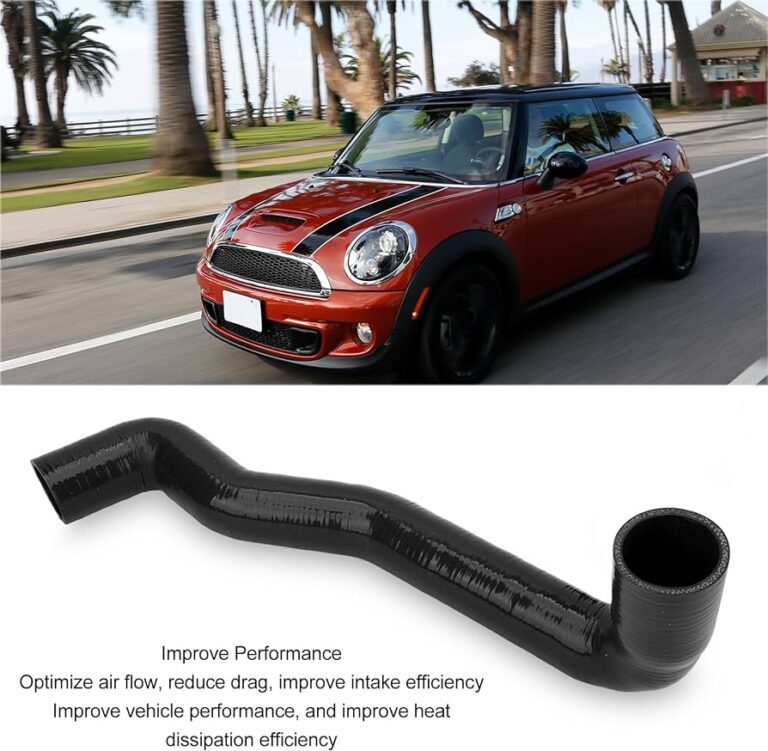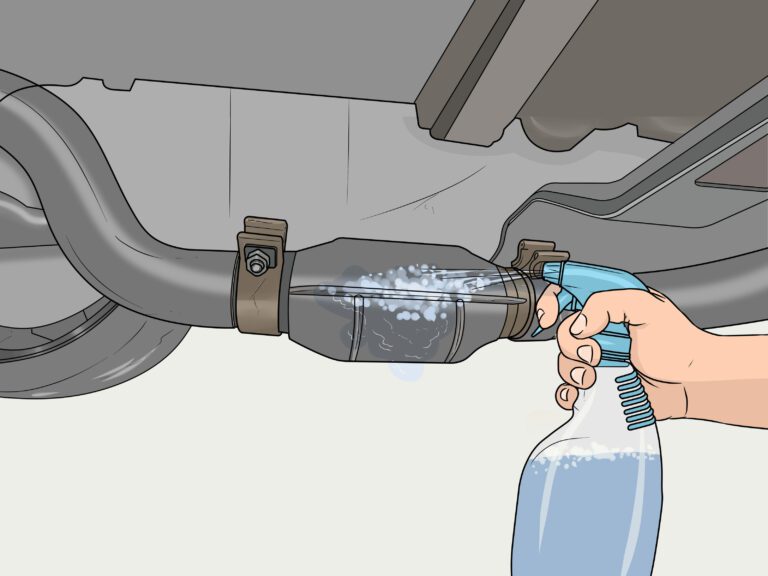Quick Fix Exhaust Leak: Easy Steps to Silence the Roar
One quick fix for an exhaust leak is to use a high-temperature sealant on the affected area. An exhaust leak can cause a variety of issues with your vehicle’s performance and emissions, so it’s important to address it promptly.
Whether you’re dealing with a small crack or a loose connection, repairing the leak can prevent further damage and ensure your engine operates efficiently. We will discuss the steps to take in order to fix an exhaust leak quickly and effectively.
By following these guidelines, you’ll be able to address the issue and get back on the road in no time.
Signs Of An Exhaust Leak
Identifying common exhaust leak symptoms is crucial in order to ensure the proper functioning of your vehicle. One of the most noticeable signs is a loud, unusual noise coming from the engine. This noise may be accompanied by a vibrating sensation in the steering wheel or pedals. Another common symptom is a strong smell of exhaust fumes inside and outside the car. You may also experience a decrease in fuel efficiency as well as a loss of power and acceleration. Additionally, if you notice carbon buildup on the exhaust manifold or nearby components, it could indicate an exhaust leak. It is important to understand the potential dangers of an exhaust leak, as it can lead to carbon monoxide poisoning, which can be life-threatening. That is why it is crucial to fix an exhaust leak promptly to avoid any further complications or risks to your health.
Tools And Materials Needed
htmlTools and Materials Needed:
To fix an exhaust leak, you will need a few essential tools and materials. It is important to have these items on hand before beginning the repair process. The necessary tools include a socket wrench set, pliers, a jack and jack stands, a pry bar, a rubber mallet, and safety glasses. In addition, you will need exhaust sealer, high-temperature silicone, a wire brush, and a putty knife.
Where to find these tools and materials:
You can find these tools and materials at various places. Your local automotive supply store or a general hardware store should have most, if not all, of the tools needed for this repair. Exhaust sealer and high-temperature silicone can be found at an auto parts store. It is recommended to shop around and compare prices to ensure you are getting the best deal.
Tips for selecting the right tools for the job:
When choosing the tools for fixing an exhaust leak, consider quality, durability, and the specific needs of your vehicle. Opt for tools that are designed for automotive use and can withstand high temperatures. It is also important to select tools that fit properly and provide a good grip. Taking the time to choose the right tools will help make the repair process smoother and more successful.
Step-by-step Guide To Fixing An Exhaust Leak
Step 1: Preparing the vehicle and ensuring safety
Before fixing an exhaust leak, it is crucial to ensure your safety and the safety of those around you. Start by parking the vehicle on a level surface and engaging the emergency brake. Put on safety goggles and gloves to protect yourself from any potential hazards.
Step 2: Locating the exhaust leak
To identify the source of the exhaust leak, start the engine and carefully listen for any hissing or popping sounds. This will help you pinpoint the area that needs repair. You can also visually inspect the exhaust system for any visible signs of damage, such as rust or holes.
Step 3: Evaluating the severity of the leak
Assess the severity of the exhaust leak by considering factors such as the loudness of the noise, the location of the leak, and any noticeable decrease in performance. This will help you determine whether a quick fix is sufficient or if a more extensive repair is necessary.
Step 4: Cleaning the affected area
Before applying any repair method, thoroughly clean the area around the exhaust leak. Remove any dirt, rust, or debris that may affect the adhesion of the repair material. Use a wire brush or sandpaper to ensure a clean surface.
Step 5: Choosing the appropriate repair method
Depending on the severity and location of the leak, you can consider different repair methods such as using exhaust tape, epoxy, or a patching kit. Choose the method that best suits your specific situation and follow the manufacturer’s instructions.
Step 6: Applying the chosen repair method
Follow the instructions provided with the chosen repair method to apply it effectively. Ensure proper adhesion and coverage to seal the leak completely. Take your time and methodically apply the repair material, paying close attention to any overlapping or areas of weakness.
Step 7: Testing the repair and checking for any remaining leaks
After completing the repair, start the engine again and listen for any signs of a remaining leak. You can also use a soapy water solution and apply it around the repaired area. If you notice any bubbles forming, it indicates that there may still be a leak that requires further attention.
Step 8: Post-repair maintenance and preventive measures
Once you have successfully fixed the exhaust leak, it is essential to maintain your vehicle’s exhaust system to prevent future leaks. Regularly inspect the system for any signs of damage or deterioration and address any issues promptly. Additionally, practicing proper driving habits such as avoiding excessive acceleration or off-road driving can help prevent exhaust leaks in the long run.
Temporary Solutions For Emergencies
Experiencing an exhaust leak can be both inconvenient and potentially damaging to your vehicle’s exhaust system. However, there are temporary solutions available to help silence the leak until you can get it properly fixed.
One option is using an exhaust tape. This specialized tape is designed to withstand high temperatures and can provide a temporary seal for small cracks or holes in your exhaust system. Simply wrap the tape tightly around the affected area and secure it in place.
Another temporary fix is using epoxy putty. This putty becomes hard and heat-resistant when cured, making it suitable for sealing small leaks. Apply the putty to the damaged area and allow it to dry completely before starting your car.
It’s important to note that these temporary solutions are just that – temporary. They should only be used as a last resort and not as a long-term fix. Using these solutions for an extended period of time can lead to further damage to your exhaust system.
Remember that it’s always best to have a professional inspect and repair your exhaust system as soon as possible to avoid any further issues or damage.
Common Mistakes To Avoid
If you are attempting to fix an exhaust leak, there are certain common mistakes that should be avoided to prevent making the situation worse. One common pitfall to watch out for is using quick fix solutions such as duct tape or epoxy. While these may provide a temporary fix, they are unlikely to withstand the high temperatures and pressures associated with the exhaust system. Additionally, using inappropriate materials can lead to toxic fumes being released. It is also important to avoid attempting a DIY fix without proper knowledge and tools. Without understanding the underlying cause of the leak, you may end up exacerbating the problem or causing damage to other components. To prevent making the situation worse, it is recommended to seek professional help or consult a knowledgeable mechanic who can accurately diagnose and fix the exhaust leak using appropriate methods and materials.
Benefits Of Fixing An Exhaust Leak
Benefits of Fixing an Exhaust Leak Fixing an exhaust leak comes with several advantages. Firstly, it improves performance and fuel efficiency. When there is a leak in the exhaust system, the engine has to work harder to push the exhaust gases out, resulting in decreased power and reduced fuel economy. By fixing the leak, the engine can operate at its optimal capacity, leading to better performance and improved fuel efficiency. Secondly, fixing an exhaust leak can enhance the lifespan of the exhaust system. Leaks can cause damage to the exhaust components, such as the manifold, pipes, and muffler. If left unaddressed, these small issues can escalate and lead to expensive repairs or even the need for a complete replacement of the exhaust system. By promptly fixing the leak, you can prevent further damage and extend the overall lifespan of the exhaust system. Lastly, fixing an exhaust leak is essential for reducing health risks associated with exhaust leaks. When an exhaust leak occurs, harmful gases like carbon monoxide can enter the cabin of the vehicle. Carbon monoxide is a poisonous gas that can lead to various health problems, including headaches, dizziness, and even death in severe cases. By fixing the leak, you ensure that you and your passengers are not exposed to these dangerous gases, ensuring a safer driving experience. In conclusion, fixing an exhaust leak has multiple benefits, including improved performance and fuel efficiency, enhanced lifespan of the exhaust system, and reduced health risks associated with exhaust leaks. Table format | Benefits of Fixing an Exhaust Leak | |———————————–| | Improved performance and fuel efficiency | | Enhancing the lifespan of the exhaust system | | Reducing health risks associated with exhaust leaks |Diy Vs. Professional Repair
Fixing an exhaust leak yourself can be a tempting option due to its cost-effectiveness and the satisfaction of a job well done. However, there are advantages and disadvantages to consider.
Advantages:
- Saves money on labor costs.
- Opportunity to learn and grow your automotive knowledge and skills.
- Immediate solution without needing to wait for an appointment.
- Flexibility to work at your own pace and schedule.
Disadvantages:
- Requires proper tools and equipment.
- Potential risks if not done correctly, such as further damage or injury.
- Time-consuming process, especially for beginners.
- Limited warranty or guarantees on the repair.
If you lack the necessary tools, experience, or confidence in your DIY skills, it may be best to seek professional assistance. A professional repair service can offer:
Expertise:
Professionals have the knowledge and experience to accurately diagnose and fix the exhaust leak.
Quality parts:
They use high-quality replacement parts, ensuring a durable and long-lasting repair.
Warranty:
Most professional repairs come with a warranty, providing peace of mind and protection.
Time efficiency:
Professionals work efficiently, minimizing vehicle downtime and getting you back on the road quickly.
When choosing a professional repair service, consider their reputation, experience, and customer reviews. Opting for a certified mechanic or specialist ensures a reliable and satisfactory fix for your exhaust leak.
Maintenance Tips To Prevent Future Leaks
Maintenance Tips to Prevent Future Leaks
Regular inspection and maintenance are key to preventing exhaust leaks. By taking the time to check your exhaust system regularly, you can identify any issues early on and prevent them from becoming bigger problems down the line.
One of the most common causes of exhaust leaks is corrosion. Over time, the metal in the exhaust system can rust and weaken, leading to leaks. To prevent this, it’s important to keep your exhaust system clean and free from rust. Regularly washing and waxing your vehicle can help protect the metal.
Another common cause of leaks is loose or damaged connections. It’s important to check the clamps and gaskets in your exhaust system regularly to ensure they are tight and in good condition. If you notice any damage, make sure to replace the parts as soon as possible.
Additionally, routine maintenance such as checking for and fixing any exhaust leaks can help prolong the life of your exhaust system. Regularly inspecting your system and fixing any issues can prevent more costly repairs down the line. So, make sure to include regular inspection and maintenance of your exhaust system in your vehicle’s routine maintenance schedule to keep your exhaust system in optimal condition.

Credit: www.tweaktown.com
Frequently Asked Questions On Quick Fix Exhaust Leak
How Do You Temporarily Fix An Exhaust Leak?
To temporarily fix an exhaust leak, you can use a muffler tape or a sealant specifically designed for exhaust systems. Carefully clean the affected area, apply the tape or sealant, and let it cure as per the instructions. Keep in mind that this is just a temporary solution; a professional repair is recommended for a long-term fix.
Will Jb Weld Hold An Exhaust Leak?
Yes, JB Weld can hold an exhaust leak. It is a strong adhesive that can bond metal surfaces together, making it effective for repairing exhaust leaks.
How Do You Fix A Hole In An Exhaust Without Welding?
To fix a hole in an exhaust without welding, you can use a DIY exhaust tape or an exhaust repair kit. These options are cost-effective and easy to apply. Simply clean the area, wrap the tape tightly or use the repair kit according to the instructions, and let it cure.
Is It Ok To Drive With An Exhaust Leak?
Driving with an exhaust leak is not recommended as it can pose serious risks such as harmful fumes entering the cabin and potential damage to your engine. Get your exhaust system inspected and repaired by a professional mechanic to ensure safe driving conditions.
Conclusion
In a nutshell, a quick fix for an exhaust leak can save you from major troubles down the road. By addressing this issue promptly, you ensure that your vehicle remains in good condition and prevents further damage to the exhaust system.
Remember to inspect and repair any leaks as soon as you notice them to maintain a safe and efficient driving experience. Keep your engine running smoothly and protect the environment with a simple fix.








